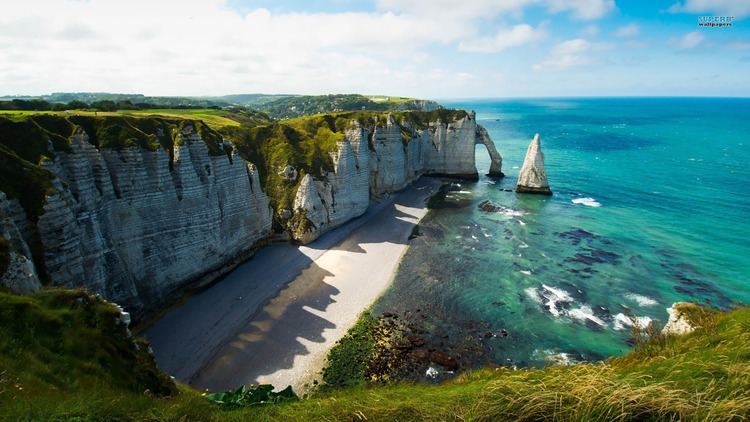Population (2011) 1,461 Local time Saturday 11:44 PM | Region Normandy Canton Criquetot-l'Esneval Area 4.07 km² | |
 | ||
Weather 9°C, Wind W at 8 km/h, 90% Humidity Points of interest The Cliffs at Etretat, Côte d'Albâtre, Chapelle Notre‑Dame de la Gar, Le Clos Lupin, Casino JOA d'Etretat | ||
Natural wonders tretat france
Étretat is a commune in the Seine-Maritime department in Normandie region in north-western France. It is a tourist and farming town situated about 32 km (20 mi) north-east of Le Havre, at the junction of the D 940, D 11 and D 139 roads. It is located on the coast of the Pays de Caux area.
Contents
- Natural wonders tretat france
- Map of C389tretat France
- tretat cliffs france
- The cliffs
- The White Bird
- References
Map of %C3%89tretat, France
tretat cliffs france
The cliffs
Étretat is best known for its chalk cliffs, including three natural arches and a pointed formation called L'Aiguille or the Needle, which rises 70 metres (230 ft) above the sea. The Etretat Chalk Complex, as it is known, consists of a complex stratigraphy of Turonian and Coniacian chalks. Some of the cliffs are as high as 90 metres (300 ft).
These cliffs and the associated resort beach attracted artists including Eugène Boudin, Gustave Courbet and Claude Monet. They were featured prominently in the 1909 Arsène Lupin novel The Hollow Needle by Maurice Leblanc. They also feature in the 2014 film Lucy, directed by Luc Besson.
Two of the three famous arches are visible from the town, the Porte d'Aval, and the Porte d'Amont. The Manneporte is the third and the biggest one, and cannot be seen from the town.
The GR 21 long-distance hiking path (Le Havre to Le Tréport) passes through the town.
The White Bird
Étretat is known for being the last place in France from which the 1927 biplane The White Bird (L'Oiseau Blanc) was seen. French World War I war heroes Charles Nungesser and François Coli were attempting to make the first non-stop flight from Paris to New York City, but after the plane's 8 May 1927 departure, it disappeared somewhere over the Atlantic. It is considered one of the great unexplained mysteries of aviation. A monument to the flight was established in Étretat, but destroyed during World War II, during German occupation. A new and taller monument was constructed in 1963, along with a nearby museum.
